Frank Lloyd Wright’s Buffalo masterpiece: the Martin Complex
Visiting Fallingwater several years ago made me a committed fan of American architect Frank Lloyd Wright, and since then I look for every opportunity to step inside one of his innovative structures. Luckily for Henk and I, we live in Toronto, a 90-minute drive from Buffalo, which boasts several Wright buildings of note, one of which is the Darwin Martin House.
Considered by many (including Wright himself) to be an opus, this complex in Buffalo’s Parkside East Historic District has been undergoing a twenty-year, $60 million dollar restoration, and I was anxious to see the final result. So with an architecturally-themed weekend in mind, Henk and I set out to explore Frank Lloyd Wright’s Buffalo masterpiece. What we discovered was that when it comes to preserving this architectural gem, Buffalo has definitely gotten it Wright – and then some.
Darwin Martin & Frank Lloyd Wright: the Buffalo Connection
Many people are not aware that at the end of the turn of the 20th century, Buffalo was one of the America’s most affluent and prosperous cities, with the most millionaires per capita in the country. The city’s prime location on the Erie Canal made it a major shipping hub for moving goods throughout the northeast, and entrepreneurs and workers alike flocked to the city to earn their fortunes and put down roots. One of the most successful of these was Darwin D. Martin, who came to the city in 1890 after catching the eye of John Larkin, president of the Buffalo-based Larkin Soap Company. Larkin hired Darwin who rapidly rose in the ranks of the company to become Corporate Secretary, helping to transform the soap company into one of America’s most successful mail-order catalogue companies.
Darwin Martin and Frank Lloyd Wright circa 1908
It was now 1902 and the Larkin company was looking for an architect to design their new administrative building in Buffalo. Martin seized this opportunity to further secure his position with the President by proposing Frank Lloyd Wright as the right man for the project. Wright had just built a home for Darwin’s brother, William, in Chicago’s Oak Park, and Wright’s reputation as an innovative designer was taking off. The Larkin Building was given to Wright to design, and so began what would be a 30-year long friendship between Martin and Wright.
The Larkin Building
The Larkin Building had an imposing exterior but the interior was filled with light
Frank Lloyd Wright completed the Larkin Building in 1906, which was lauded for its innovative use of interior space and light and for other features that Wright installed like air conditioning, radiant heat, glass doors and steel furniture. But despite all the high praise for Wright’s work, the building followed the fate of the Larkin Company itself which fell onto hard times during the Depression of the early 1940s. By 1945 the city foreclosed on the building which was eventually torn down in 1950 despite protests from the architectural community. Today all that remains on the site is a ‘ghost pier’ of glass on the single remaining corner pillar and a commemorative plaque with photos of the original building.
All that remains of Frank Lloyd Wright’s Larkin Building is this corner pillar and fence replica
Darwin Martin House: Frank Lloyd Wright’s Prairie Style, Perfected
Frank Lloyd Wright’sMartin House Photographer Noah Kalina
At the same time that Darwin Martin was proposing Wright as the architect for the Larkin Building, Martin commissioned him as the architect for his own private residence. It was a huge commission that resulted in a six-structure complex that included the main Martin house, a Carriage House, Pergola, Conservatory, Gardener’s Cottage, and the Barton House (for Darwin’s sister Delta and her husband).
Vastly different than the fortress-like Larkin commercial building, the Martin complex represented Frank Lloyd Wright’s “Prairie School” house. Described by Wright himself as being “married to the ground”, these long, low, homes with deep overhanging eaves and shallow roof pitches were Wright’s alternative to the typical Victorian style of domestic architecture. Wright wanted to create something truly original and American, the first examples of which were built in the midwest (hence the ‘Prairie’ moniker).
Frank Lloyd Wright designed William Martin’s home in Oak Park
Keeping true to this Prairie style, the Martin House features strong horizontal lines: Roman bricks are long and lean, and are used both inside and out. The recessed mortar between them is meant to give the effect of lateral strands of raw silk wrapping the home. (Inside the home the mortar is actually tinted with a reflective gold colour for added luxe.) The eavestroughs needed to appear perfectly horizontal, too, so they were constructed with an inner trough on an angle to actually move the water away from the house, hidden within an outer trough that runs perfectly parallel to the horizontal roofline. Vertical downspouts were just not allowed.
Courtyard of Darwin Martin House *Photo: Buffalo New york
Architectural Innovation, a Wright Trademark
If perfection was Frank Lloyd Wright’s first obsession, then innovation ran a close second. The Martin House interior has one of the first open-concept living/dining spaces ever designed. Structural supports were pushed to the perimeter to allow for a seamless flow from one room to another with unobstructed views between.
Frank Lloyd Wright’s Martin House Dining Room Photo: KC Kraft
Similarly, Wright was one of the first to embrace the idea of integrating indoor and outdoor spaces. A stunning stained glass skylight in the living room brings in light and ceiling beams between continue out into the exterior covered veranda. Large floor-to-ceiling doors can be opened up to connect the two areas and blur the line between inside and out.
Stained glass skylights in the main living room ceiling bring the outdoors in. Photo Biff Henrich
Wright’s inclusion of nature in his designs is also reflected in everything from the outdoor planters he designed with built-in watering systems to the custom tile surround for the two-sided fireplace embellished with raised wisteria boughs.
Frank Lloyd Wright’s Martin House fireplace with Wisteria detail Photo Noah Kalina
And then there are Wright’s renowned art glass designs (of which there were 394 pieces in the house), including the stylized Tree of Life stained glass window specifically designed for the Martin house.
Original Martin House Tree of Life window, Chazen Museum of Art Wisconsin *public domain
This statue designed by Frank Lloyd Wright holds a stylized wisteria
Even the spaces where the staff worked received the same attention to detail, particularly the impressive kitchen. In the early 1900s, the Martin House kitchen would have been a chef’s fantasy. It looks modern even today with undermounted sinks, white solid surface countertops, glass-fronted cabinets, expansive prep areas for the staff and a white palette throughout. If it weren’t for the six beautifully crafted wooden ice boxes installed in one wall, you could almost mistake the room for being a 21st century design.
Frank Lloyd Wright’s Martin House kitchen Photo Noah Kalina
Wright designed it all, even choosing the colours for the paint and designing every piece of furniture within the home. No detail was too small for him, right down to the custom bookcases specifically built with an individual shelf for each volume of Martin’s Encyclopedia collection.
Designed to Impress
The 100-foot long covered Pergola has glass tiles installed in the floor to let in light below
With a virtually unlimited budget, Frank Lloyd Wright was designing as much to indulge himself as he was Martin (perhaps even more). One of the most striking features of the Martin House is the 100-foot-long covered pergola that leads to a 16-foot tall statue of the Winged Victory of Samothrace installed in the Conservatory at the far end. Visible from the entrance, guests could not help but be impressed as they were ushered into the 15,000 square foot house.
The Martin House Conservatory before Nike of Samothrace was installed and the restored building in 2018
The Winged Victory of Samothrace in the Martin House Conservatory
Wright made sure that every room in the Martin House boasted features that were both expensive and unique and it is estimated that Martin spent anywhere from $175,000 to $300,000 on the house and its furnishings (the equivalent of more than $8 million dollars today!). Considering a house of the time would have cost in the $5,000 dollar range, the sheer extravagance of this gives you a sense of the amount of wealth Martin had accumulated.
Decline and Fall of a Masterwork
Frank Lloyd Wright’s Martin House Reception Room Photo: Biff Henrich
The Martin House you see today is almost exactly how it would have looked when Darwin Martin and his family lived in it in 1907, a few years after it was completed. But it is definitely not how his descendants left it.
Despite being one of Buffalo’s most prosperous residents, Darwin Martin’s wealth evaporated almost instantaneously with the stock market crash of 1929. Bankrupt and without funds to maintain the massive estate and its various structures, it is said that when Frank Lloyd Wright’s first book of architecture was published in the early 30s, Martin didn’t even have the $6 to buy one, so Frank sent him one himself. Darwin Martin never recovered his fortune and died in 1935. Two years later, having already sold most of their tangible assets, the family abandoned the Buffalo house altogether. What followed were decades of neglect with the property being subdivided, and many of the structures vandalized or demolished entirely.
RUMOUR HAS IT… that one of Wright’s original desks from the Martin House ‘may’ have found its way into the office of the University of Toronto’s Dean of Architecture. The story is that some Toronto architecture students found the desk in the garbage when they were on a field trip to study the layout of the abandoned Martin house.
A Landmark Restoration – in Every Sense
The establishment of the Martin House Restoration Corporation in the mid-1990’s saved Frank Lloyd Wright’s masterpiece from meeting the same fate as his Larkin Building. The Corporation made it their mission to restore and in some cases to completely reconstruct the Martin House Complex, returning it to its former glory using Wright’s original plans.
Two apartment buildings were torn down in order to replace the original carriage house, pergola and conservatory. Original furniture pieces that had found their way into private homes and collections were tracked down and repurchased. Some of the art glass windows with their 650 individual pieces of stained glass were replicated at a cost of $29,000 each. It was an ambitious project, and the only time one of Frank Lloyd Wright’s houses has ever actually been rebuilt.
Frank Lloyd Wright’s Martin House Complex Photo Noah Kalina
Now that the project is almost 100% complete (the restored Barton House just opened fall of 2018 and exterior landscaping is all that remains to be done), the attention to detail in this massive restoration rivals that of Frank Lloyd Wright himself. Whether you are an architecture fan, a Frank Lloyd Wright fan, or just a curious visitor interested in seeing a unique home that was decades – even a century – ahead of its time, a visit to the Darwin Martin Complex is a must if you are in the Buffalo area. It’s no wonder it has become one of Buffalo’s top attractions and a National Historic Landmark.
TIP: There are several types of tours you can book to visit the Darwin Martin House, but most do not allow photography inside the house. For that you need to book a spot on a special Photography Tour (select Saturdays only). Want to really splurge? Book a private tour for $450 and get the entire complex to yourself!
Special thanks to Buffalo Niagara Tourism for hosting Henk and I on our ‘architectural weekend getaway’.

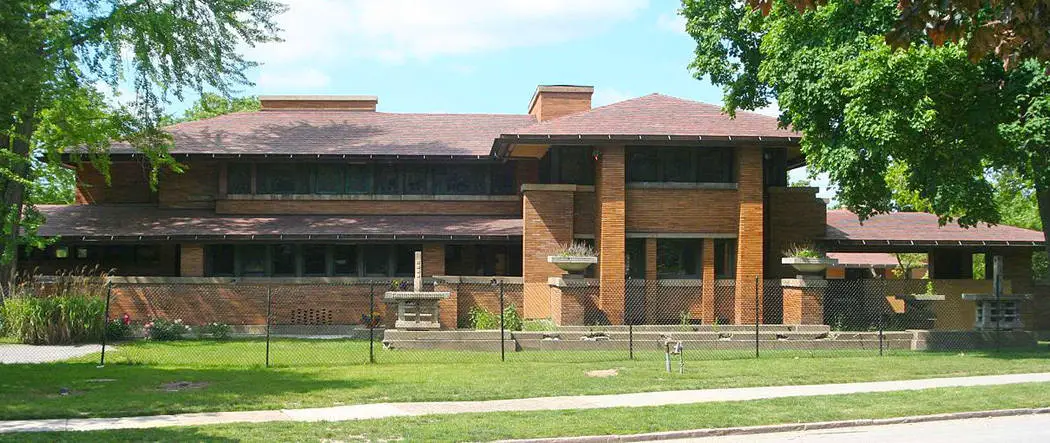
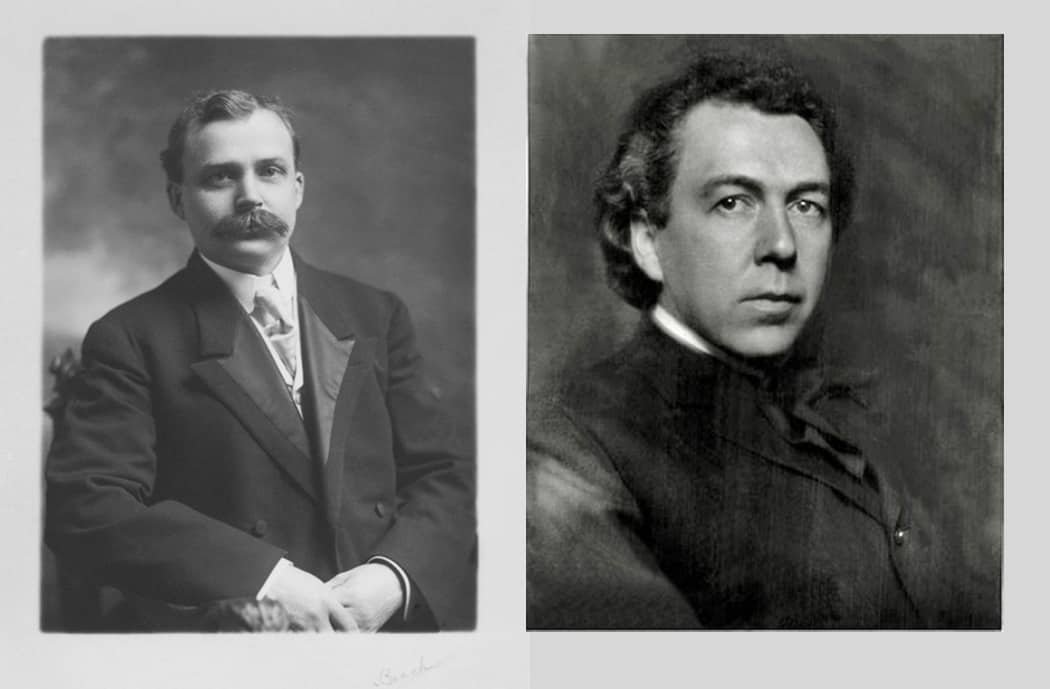
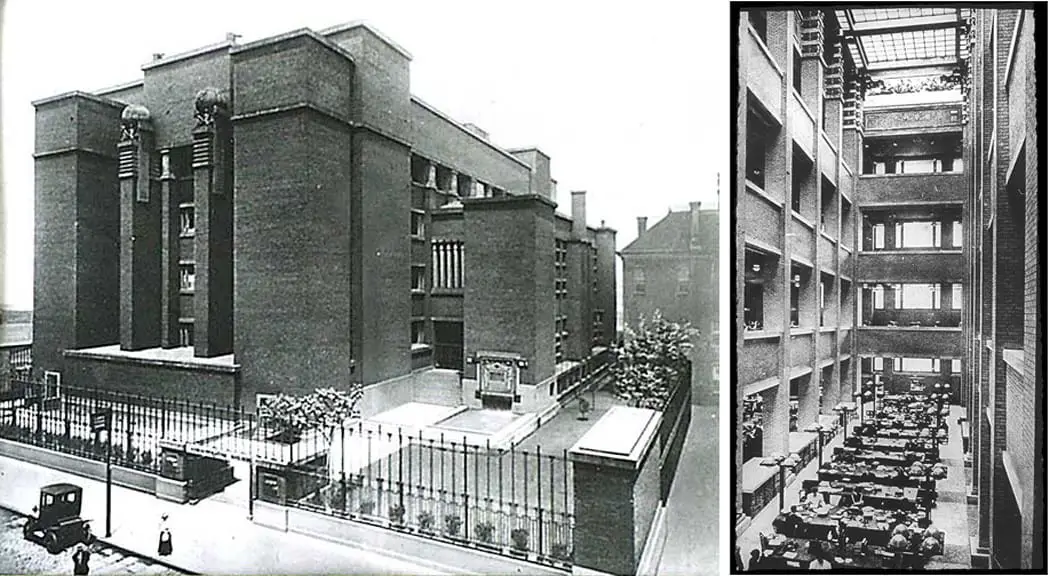
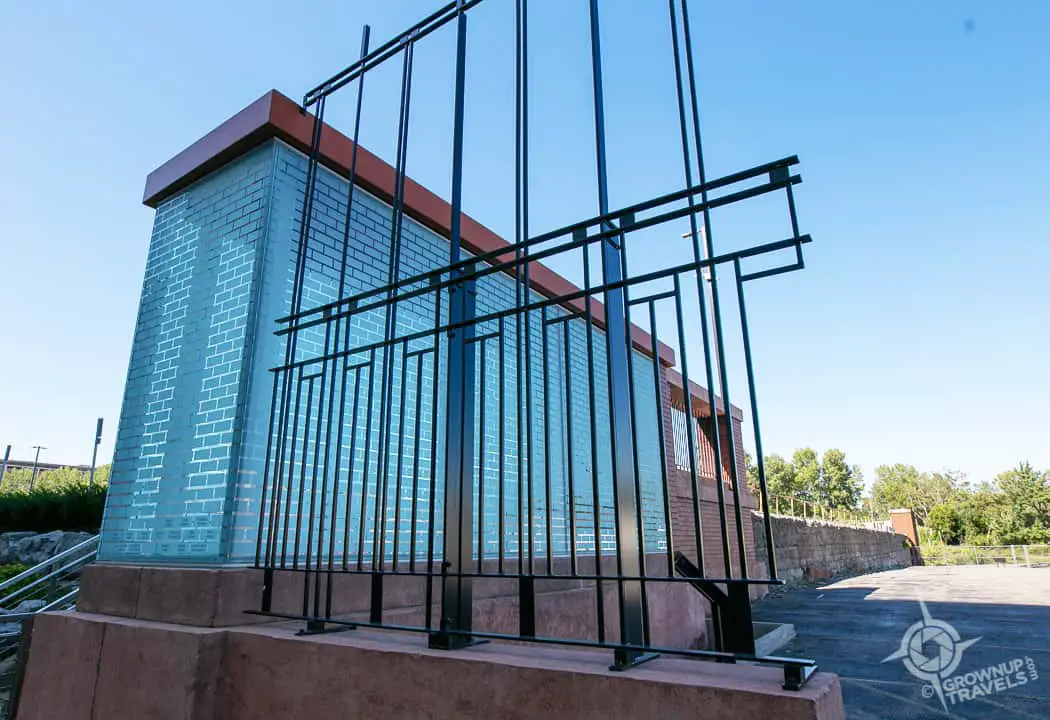

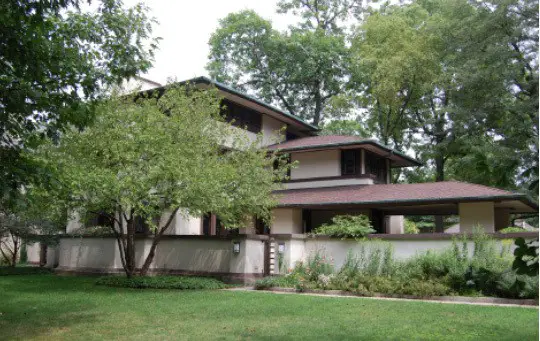
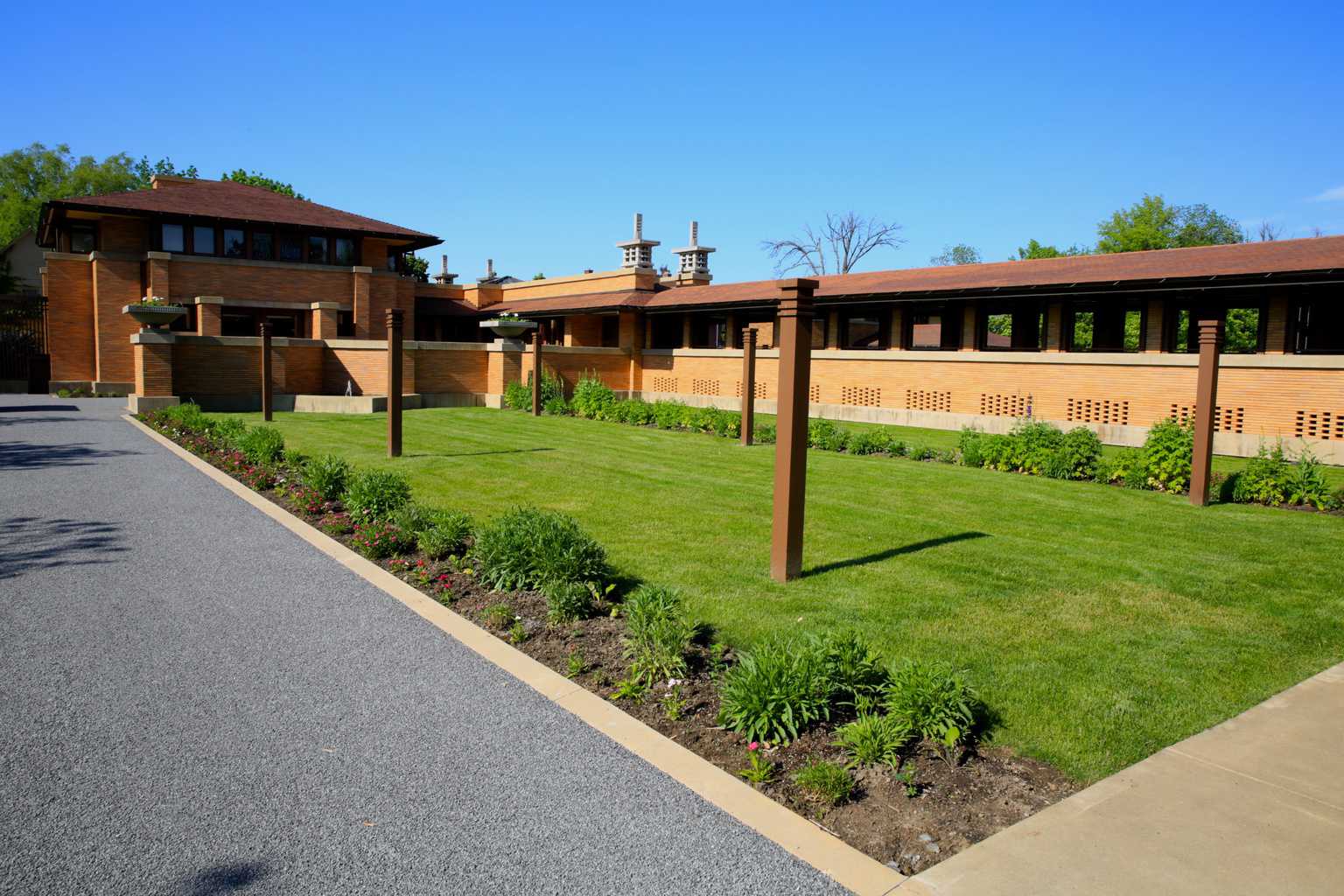
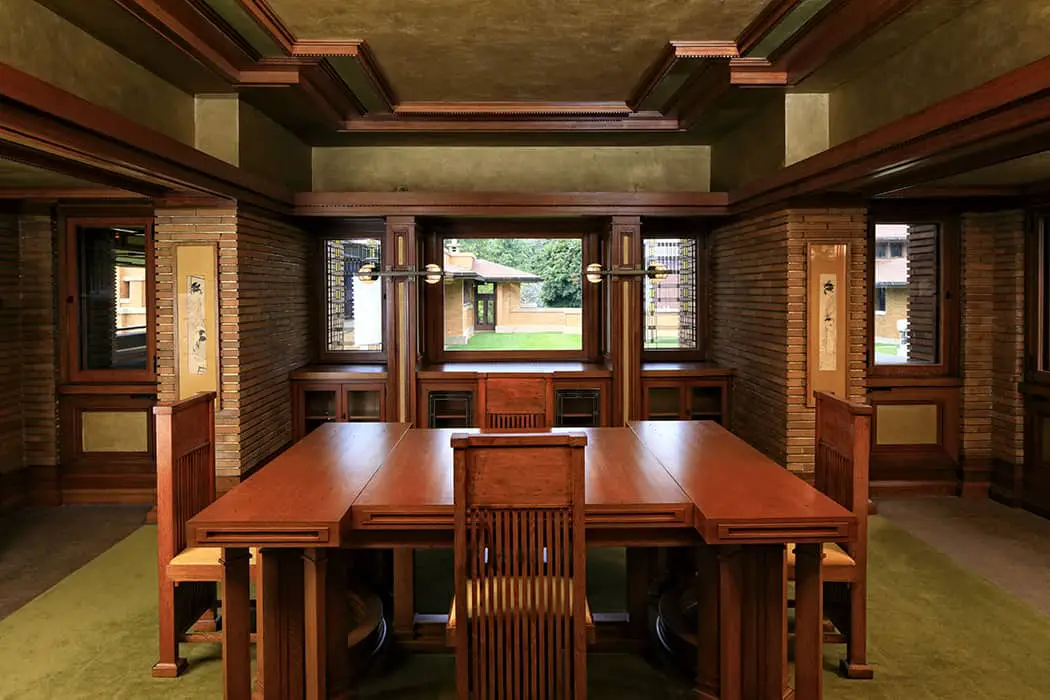


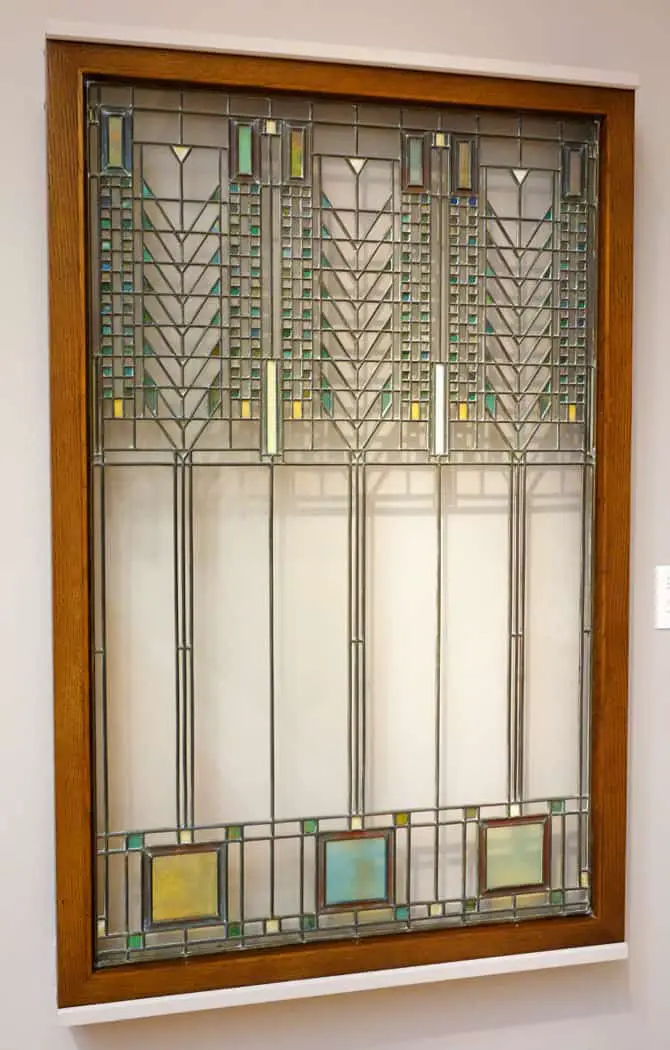

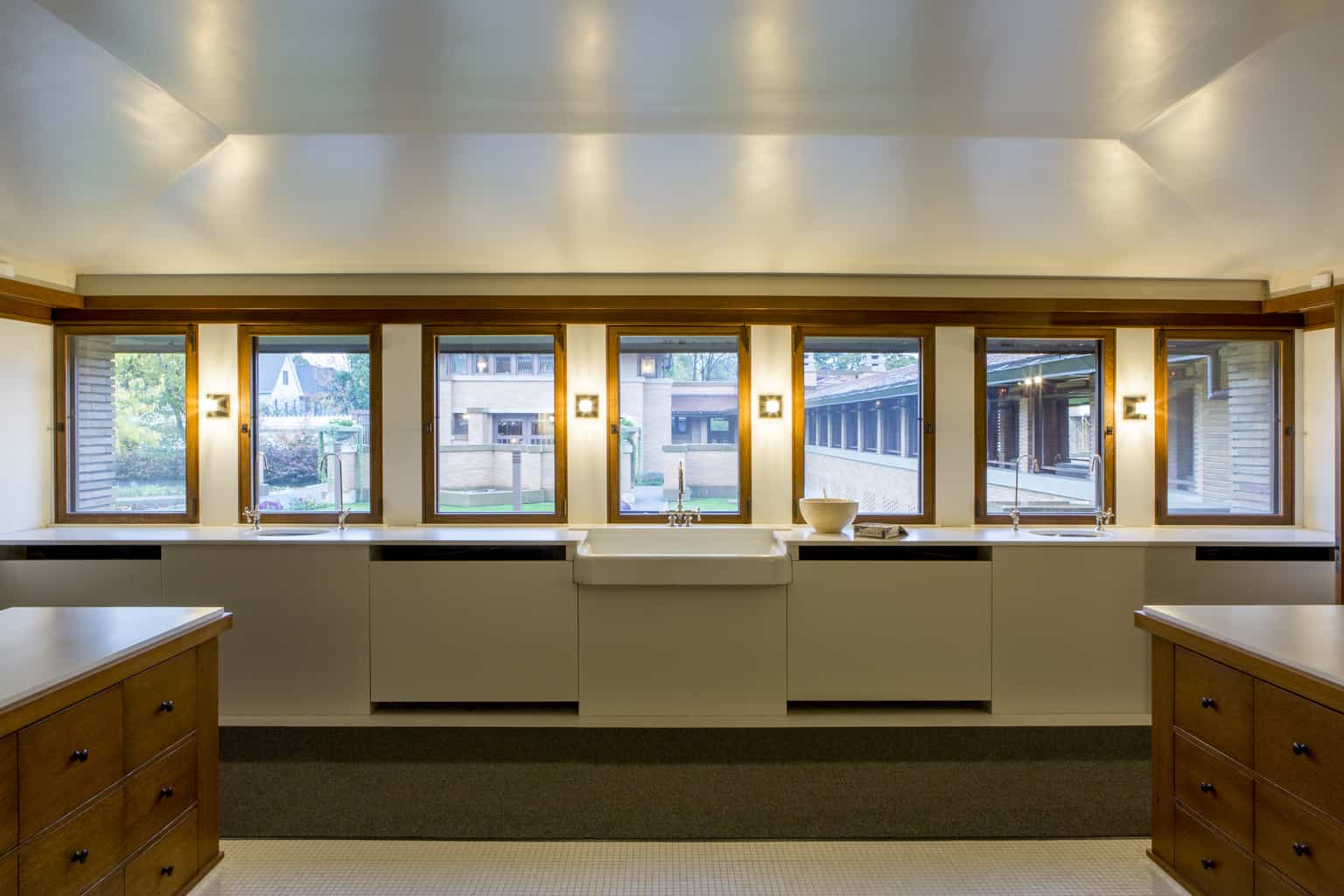
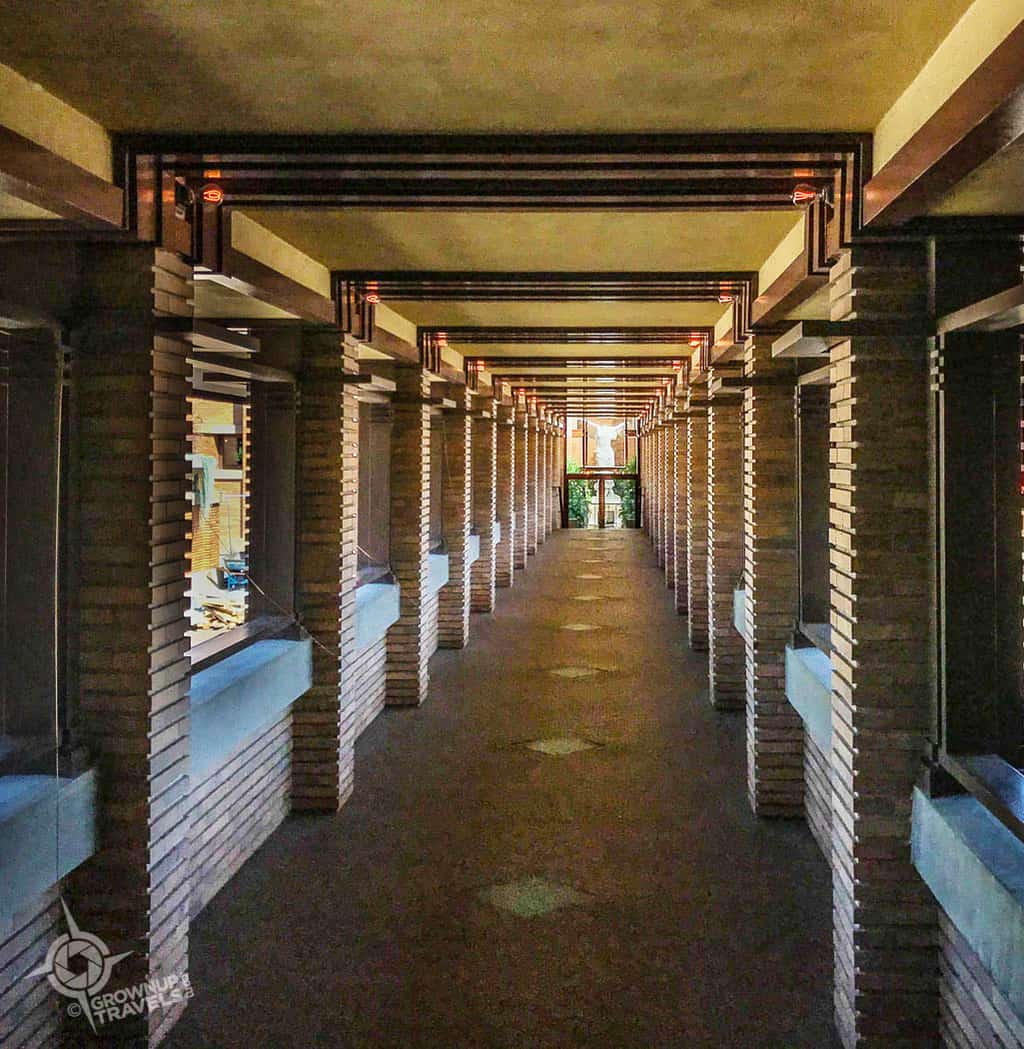

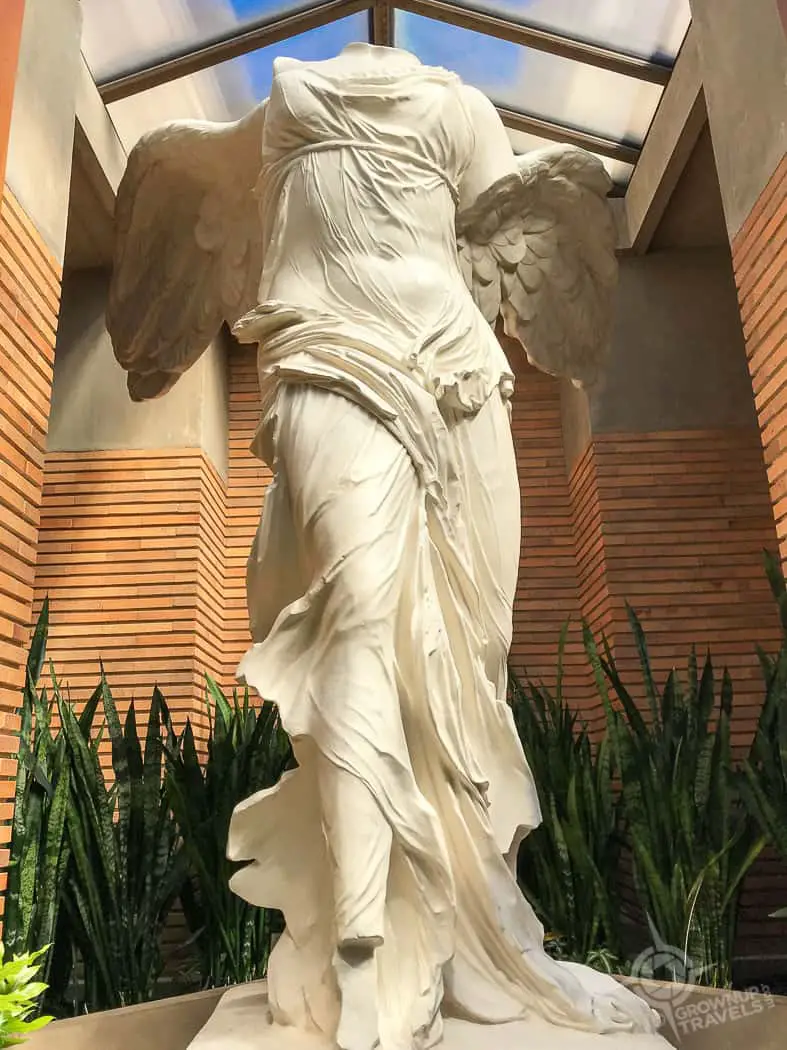
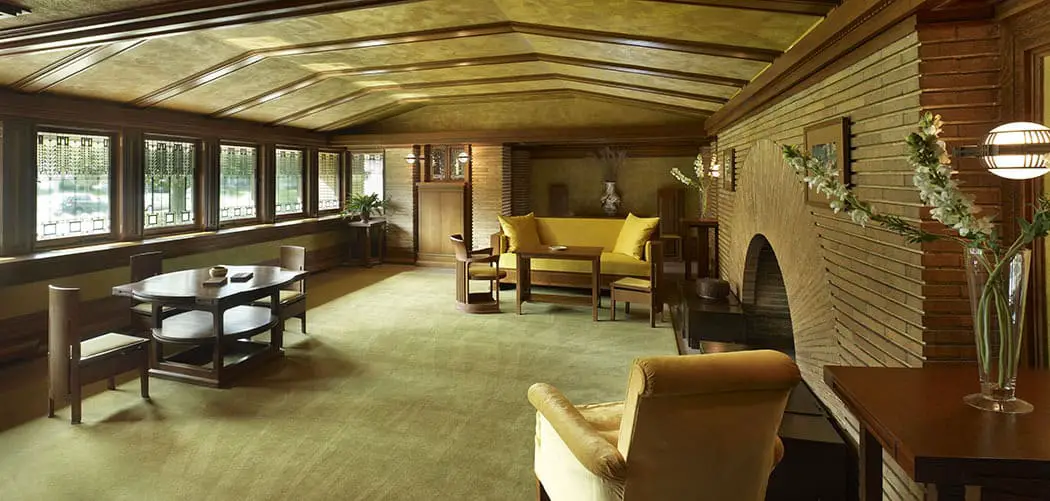
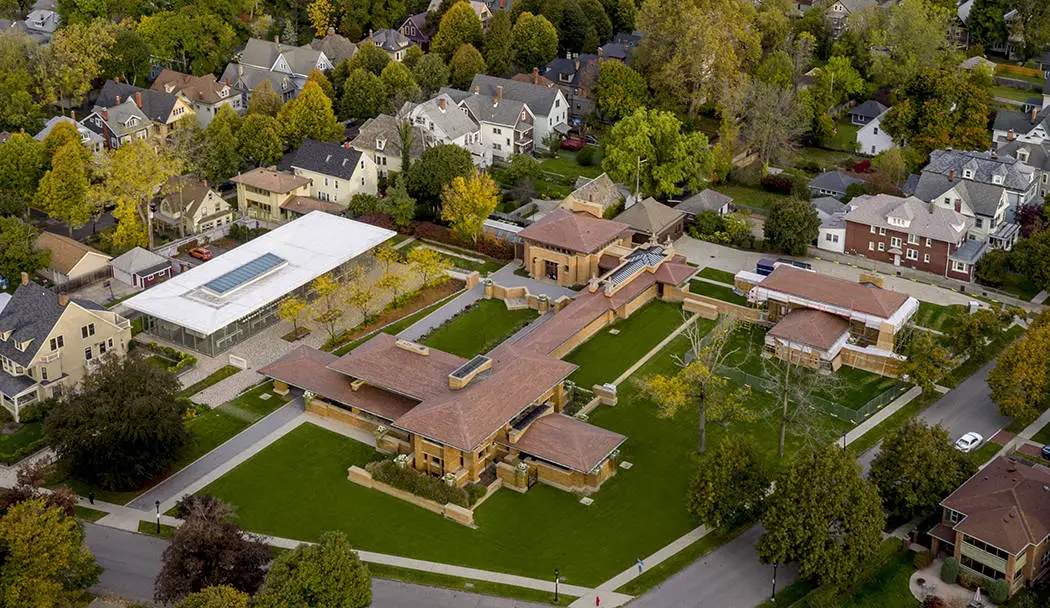


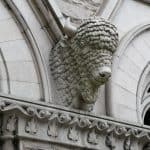
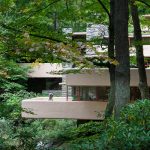
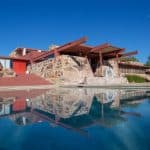







Wow!! What an amazing home! I’ve been to Frank Lloyd Wright homes before, but this is, by far, the most elaborate! The stained glass windows alone would be worth the visit. I appreciate the back story too. I love history and putting a location into context. Well done!!
Thank you so much Marilyn. I too feel that you really need to understand a bit about the families who lived in these homes to really appreciate them beyond just their architecture. Each one is so personal.
How wonderful that this is being restored. I just watched a documentary about a large F.L. Wright home on Lake Minnetonka in Minneapolis which was torn down! The only silver lining his aficionados can conjure is that the demolition inspired greater protection for other Frank Lloyd Wright masterpieces.
I too have read about a few of FLW houses that have either fallen into ruin or been destroyed. But I guess like so many other things in life, we don’t appreciate them fully until they are gone.
I must say I have never been a fan of the straight lines of a Frank Lloyd Wright design. I am much more drawn to the living lines of architects like Frank Gehry.
Interesting! I like both architectural styles myself, but I think what I like about Wright homes is how innovative they were for the time. Something both ‘Franks’ have in common at least!
I have a degree in Interior Design and love it when I find a Frank Lloyd Wright house, or other important mid-century modern structures and furniture. Would love to go to the Martin House!
I’m sure you would love it, Patti. I’m no interior designer but I love seeing all the details that he took into account when he imagined his buildings. This one is pretty amazing.
Wow, I have visited Taliesin West and East but this Martin House is way cool in it’s attention to much detail! Didn’t like the Larkin Building from the photo though.
I agree with you, Carol, about the Larkin Building. It was almost ‘Soviet’ looking from the outside and very un-Wright like. Rumour has it that it was perhaps inspired by the many silos in Buffalo…but then it could just have been Wright being wrong 🙂